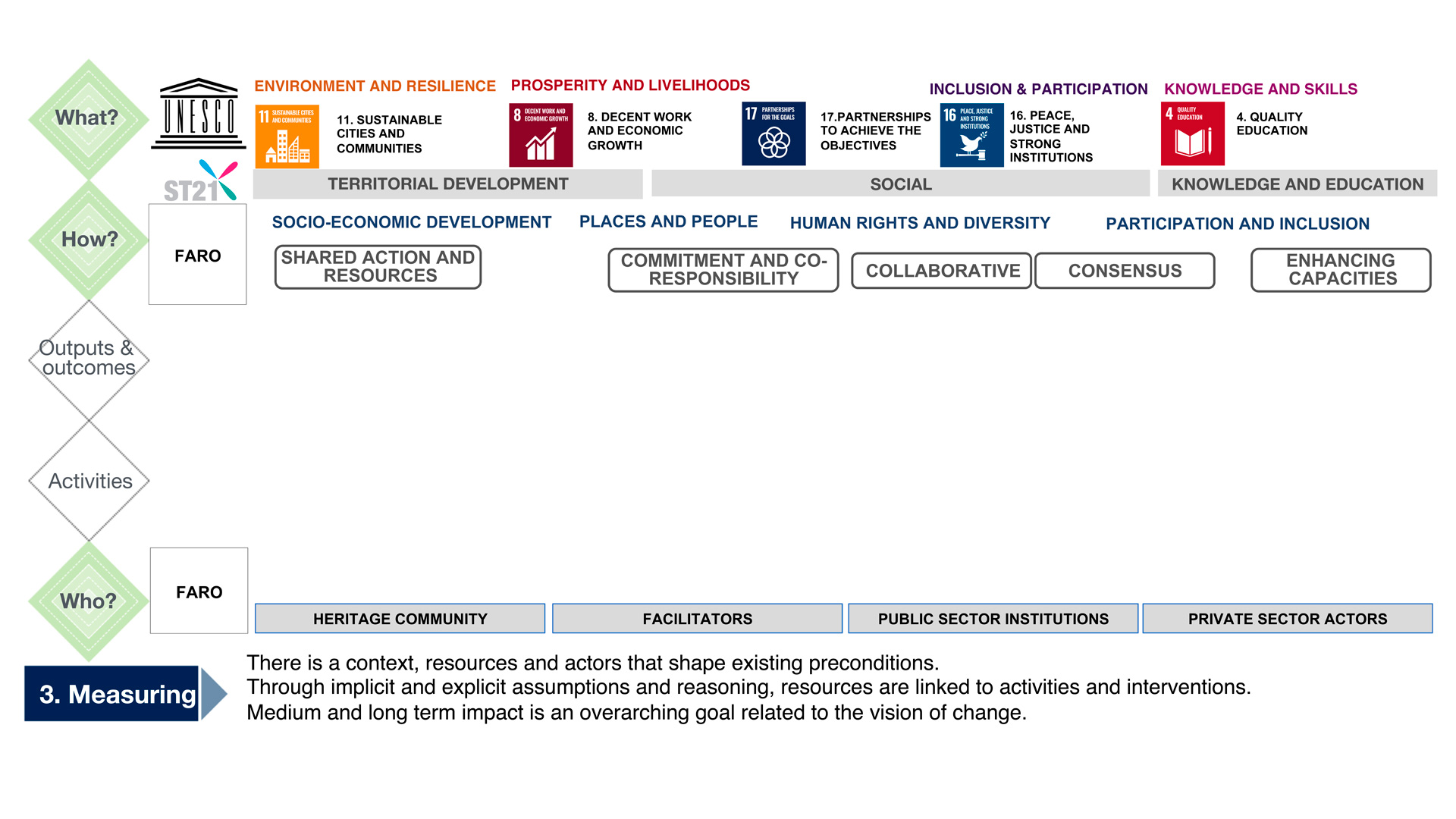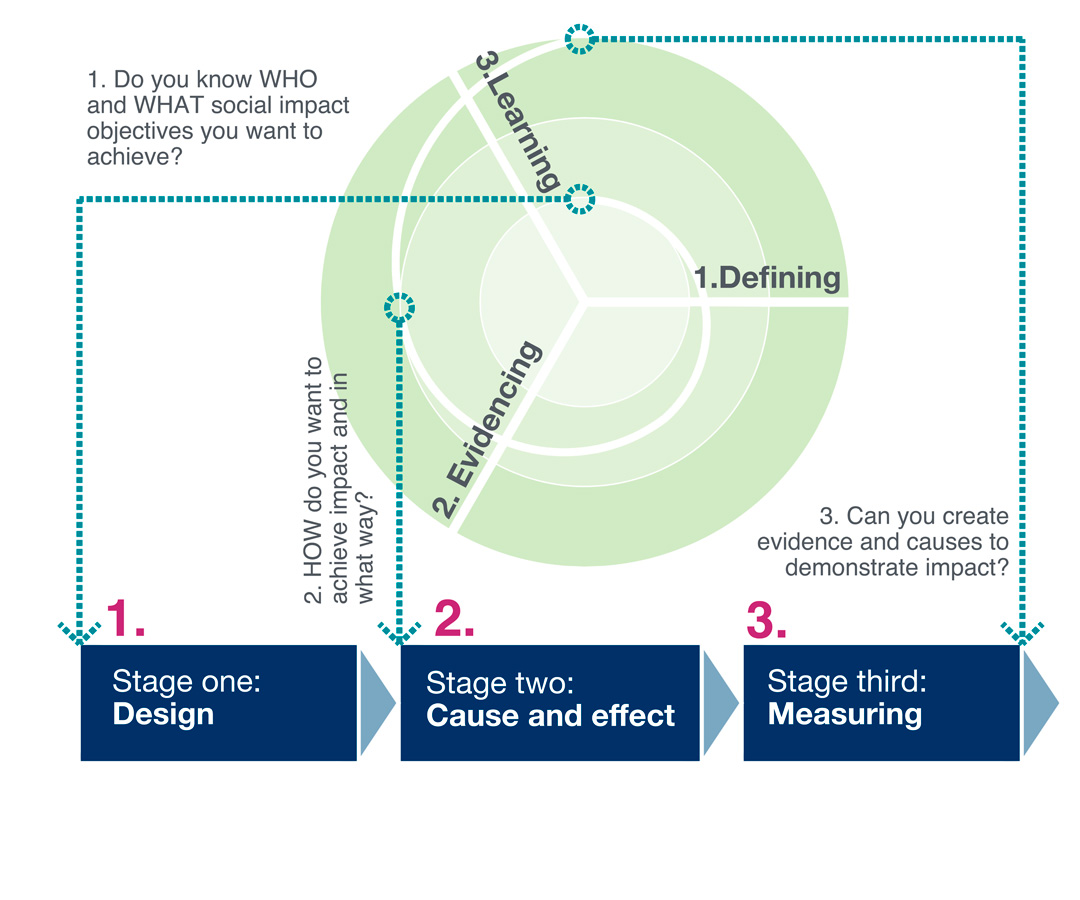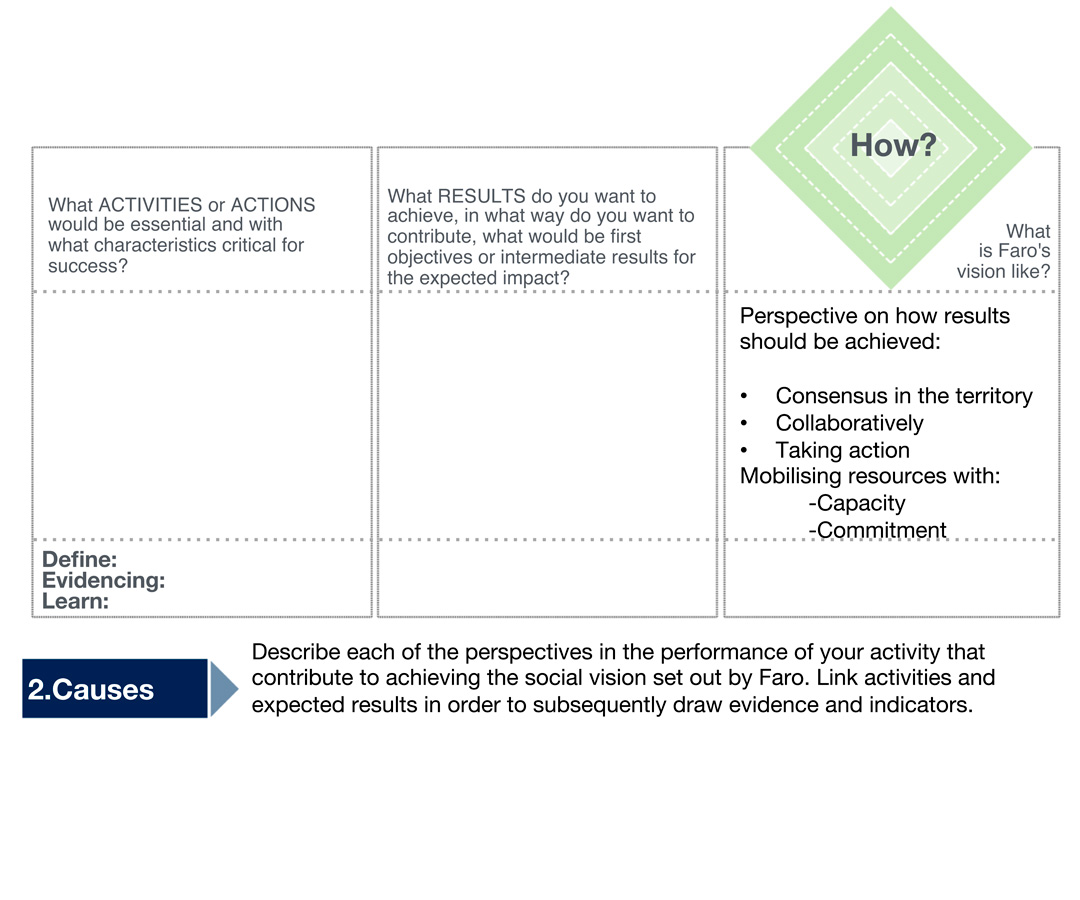Experiences and case studies on the social value and culture of measuring cultural heritage
The Faro Convention and the Theory of Change
The social component is the most intangible dimension of the three pillars of sustainability, so we need tools and narratives as well as the building of evidence to make visible the contribution of culture to the sustainability vision. It is recognisable that culture adds health and well-being to citizens, promotes local and territorial development and builds community and citizen participation.
This is a space for the transfer of knowledge through tools, case studies and reference documents in order to continue learning.
We have started from the Faro Framework Convention of the Council of Europe that reflects on the value of cultural heritage for society and the consequent need to promote the link and ongoing participation of local communities in its management.


Experiences and case studies on the social value and culture of measuring cultural heritage
The Faro Convention and the Theory of Change
The social component is the most intangible dimension of the three pillars of sustainability, so we need tools and narratives as well as the building of evidence to make visible the contribution of culture to the sustainability vision. It is recognisable that culture adds health and well-being to citizens, promotes local and territorial development and builds community and citizen participation.
This is a space for the transfer of knowledge through tools, case studies and reference documents in order to continue learning.
We have started from the Faro Framework Convention of the Council of Europe that reflects on the value of cultural heritage for society and the consequent need to promote the link and ongoing participation of local communities in its management.
Faro experiences
Faro experiences
Programa Emilianensis de San Millán de la Cogolla
Descargar PDF del proyecto
Museo Nacional de Antropología
Descargar PDF del proyecto
The path to evaluation
The path to evaluation
01. MAP the journey towards the culture of measurement and social value
The journey towards the measurement culture facilitates selecting the appropriate tools to move forward in designing and understanding the social value of our project, programme or institution.
We highlight three iteration cycles: starting with a first phase to analyse and describe the strategy, with the objective of then creating a causal model including the results we want to achieve. This procedure will allow us to propose evidence and indicators aligned with the change we expect.
Each cycle in turn must be prototyped; through; defining to understand what state we are in, obtaining evidence of our analysis and validating or learning from that hypothesis.
01. MAP the journey towards the culture of measurement and social value
The journey towards the measurement culture facilitates selecting the appropriate tools to move forward in designing and understanding the social value of our project, programme or institution.
We highlight three iteration cycles: starting with a first phase to analyse and describe the strategy, with the objective of then creating a causal model including the results we want to achieve. This procedure will allow us to propose evidence and indicators aligned with the change we expect.
Each cycle in turn must be prototyped; through; defining to understand what state we are in, obtaining evidence of our analysis and validating or learning from that hypothesis.
02. Define expected impact of applying the Faro principles. Define WHO and WHAT
The Faro Convention on the Social Value of Cultural Heritage focuses its principles on holistic management for social inclusion, human rights and community well-being.
Through:
- Community connection with the territory and a sense of belonging.
- Cooperation, commitment and shared responsibilities for social cohesion.
- Democratic values, dialogue and participation.


02. Define expected impact of applying the Faro principles. Define WHO and WHAT
The Faro Convention on the Social Value of Cultural Heritage focuses its principles on holistic management for social inclusion, human rights and community well-being.
Through:
- Community connection with the territory and a sense of belonging.
- Cooperation, commitment and shared responsibilities for social cohesion.
- Democratic values, dialogue and participation.
03. Define how you are going to achieve the results expected by Faro. Define HOW
Faro describes in its vision an approach on how to achieve impact through consensus, working collaboratively and taking action by mobilising resources and competences.
The how should be broken down for each case by analysing the existing conditions, the skills, capacities and experiences that are strengths and the activities and actions that are being developed or designed.
Through assumptions, these activities are linked to expected results aligned with the vision.
Detailing the how facilitates the next phase: incorporating the culture of measurement.
03. Define how you are going to achieve the results expected by Faro. Define HOW
Faro describes in its vision an approach on how to achieve impact through consensus, working collaboratively and taking action by mobilising resources and competences.
The how should be broken down for each case by analysing the existing conditions, the skills, capacities and experiences that are strengths and the activities and actions that are being developed or designed.
Through assumptions, these activities are linked to expected results aligned with the vision.
Detailing the how facilitates the next phase: incorporating the culture of measurement.
04.Diagram the causal connections between WHO, WHAT and HOW. Theory of Change
Through a causal framework, it articulates long-term objectives and identifies conditions that must be met to achieve them.
It is a tool for planning as well as for monitoring and evaluation. It favours the transparency of processes and the design of indicators in relation to the proposed purposes.
It is useful for:
– Articulating the future vision of the programme
– Formulate strategic or annual plans
– Define processes to establish objectives
– Identifying specific objectives and linking them to interventions
– Collect data to assess progress
Consists of a written narrative, and a causal framework consisting of; outcomes, assumptions and conditions, rationale, interventions and indicators.
Outcomes are the most important pillars of ToC.

04. Diagram the causal connections between WHO, WHAT and HOW. Theory of Change
Through a causal framework, it articulates long-term objectives and identifies conditions that must be met to achieve them.
It is a tool for planning as well as for monitoring and evaluation. It favours the transparency of processes and the design of indicators in relation to the proposed purposes.
It is useful for:
– Articulating the future vision of the programme
– Formulate strategic or annual plans
– Define processes to establish objectives
– Identifying specific objectives and linking them to interventions
– Collect data to assess progress
Consists of a written narrative, and a causal framework consisting of; outcomes, assumptions and conditions, rationale, interventions and indicators.
Outcomes are the most important pillars of ToC.
Key documents
Key documents
The evaluation journey: A toolkit for cultural operators
Towards heritage community assessment
Manchester histories, toolkit 3 evaluating your
Project
Impact assessment of cultural heritage projects
European heritage strategy for the 21st century
Participatory governance of cultural heritage
Social platform for holistic heritage impact
Assessment
Europeana impact playbook
Culture and local development: maximising the impact, a guide for local governments, communities and museums
Share your experiences
Comparte tus experiencias
0 Comments
Submit a Comment
Project coordinated by Mariola Andonegui and Ana Schoebel as experts in Cultural Heritage
and Concha Maza on sustainability and theory of change
Activity subsidized by

cofinances:
















0 Comments